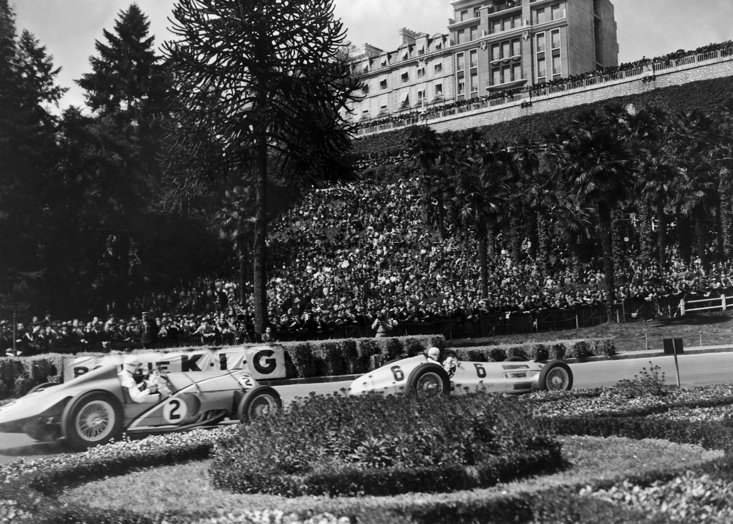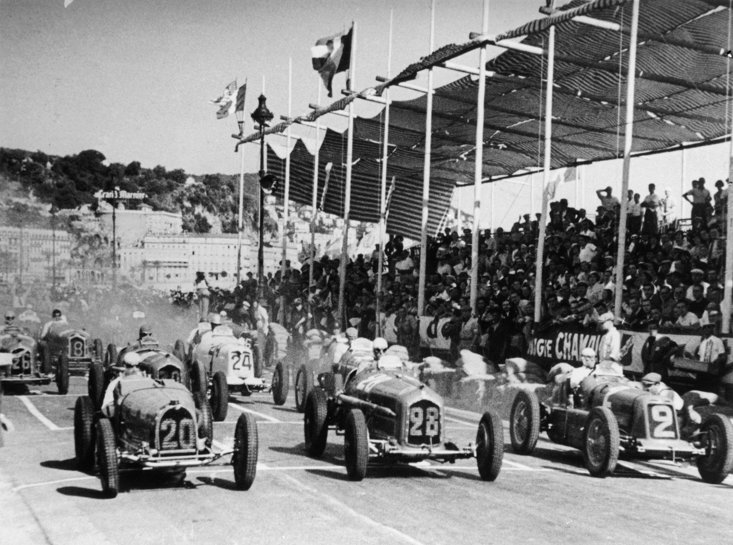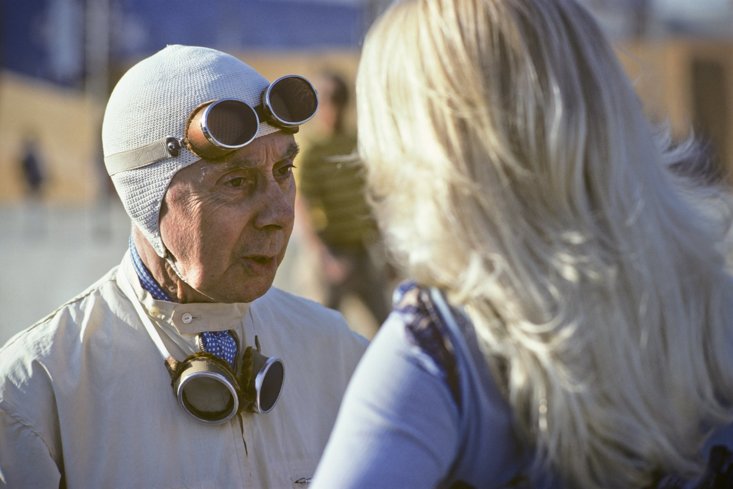“There are only three sports: bullfighting, mountaineering, and motor racing; all the rest are merely games,” so purportedly asseverated Ernest Hemingway.
The past decade of Formula One has been dominated by one outfit, that of Mercedes. The constructor has guided drivers to six straight World Championships since 2014, a $430 million (£350m) per-year, behemothic, merciless operation that prioritises unrelenting success above all.
In the mid to late 20th century, Mercedes went under a self-imposed hiatus from competition for four decades. Before that there was another time when Mercedes were first the premier force in motor racing.
The success in this era, however, was used for far more nefarious purposes. In the earlier days of the sport, and in the face of a nation whose hunger for power wouldn’t be abated, one French motor racing driver would help symbolise a temporary derailment of the ambition of supremacy .
René Dreyfus was born in Nice, France, in 1905. Under the tutelage of his grandfather, he entered his first race in 1924. In 1930, he garnered considered attention by winning the second Monaco Grand Prix in a privately entered type 35B Bugatti and followed up his victory at Monte Carlo with overall and class wins at the 1930 Marne Grand Prix, the 1930 Grand Prix d’Esterel Plage, the 1931 Grand Prix de Brignoles, the 1934 Belgian Grand Prix, the 1935 Marne Grand Prix, the 1935 Dieppe Grand Prix, the 1937 Tripoli Grand Prix, and the 1938 Cork Grand Prix.
The Grand Prix de Pau takes place in the southwest of France, in the picturesque Pyrénées-Atlantiques region, and it was at the 1938 event that cemented René's place in motor racing history.
That year it was to stage one of the most significant sporting battles of all time, one that would pit the small allegiance of a part-Jewish driver and an American heiress against the might of Nazi Germany.
The tale has been illuminated in the book ‘Faster’ by author Neal Bascomb: “It did not take a genius to know this was a remarkable sports story, perhaps better even than Jesse Owens at the Berlin Olympics,” Bascomb states.
In thirties’ premier motor racing competition, Germany was firmly in the driving seat, backed by the power and money of the Nazi government. Indeed the only competition came from themselves, as the two German powerhouses of Mercedes-Benz and Auto Union lit up the various circuits across the continent.

Adolf Huhnlein, the Korpsführer (Corps Leader) of the National Socialist Motor Corps and a favourite of Hitler had declared “Racing is and always will be the highest embodiment of motorsport and thus the highest achievement of the nation in an international competition,” the head of the German national automobile club had also stated that the prowess of the Silver Arrows was “the benchmark for the industrial ability of a whole people.”
The success on the track would place Nazi Germany firmly on the global podium.
As Dreyfus himself stated, “the arrival of Mercedes- Benz and Auto-Union, besides their thorough professionalism, brought with them a new era of nationalism that we in France, England or in Italy were unable to match. Money was no problem for these teams: their government was always there to help. It was not Mercedes or Auto-Union that was winning a race, it was their country that was winning a battle.”
Though Dreyfus was born the middle child in a Jewish family, he personally did not identify strongly with any religion. As Bascomb explains, “Although half Jewish by birth, he was not religious, nor did he give any thought to how his heritage defined him.”
Not that this would affect Hitler and the Nazis’ racially-based ideology. A time of real danger, both on and off the track, with death literally around every corner.
In the Berlin pre-1933, Dreyfus ingratiated himself in a world of culture and characters, that included Sir Malcolm Campbell, while the shadow of National Socialism began to envelope mainland Europe.
With motor-racing, a sport idealised as fast and frenetic escapism was being utilised as a powerful tool by the overriding, sinister figures of Italian dictator Benito Mussolini behind Alfa Romeo and Scuderia Ferrari, and Hitler with Daimler-Benz and Auto Union.
For racers on the circuit, however, it was knowing they were treading the same deadly path on which many of their driving comrades had fallen. Races where the crunching of bone, the snapping of spines, the smell of bloodied oil and grit were sensory accomplices at every turn: Count Eliot Zborowski, whose head was said to have "vanished into his chest cavity" after his cuff link became snagged in the cockpit; Prince Lobkowicz who flipped in Bugatti T54 60 feet and fractured his skull, never to regain consciousness; the sheer danger at Monza, where the drivers Giuseppe Campari, Mario Borzacchini and Count Stanislaw Czaykowski all died in 1931.

During a ferry ride onward to the Tripoli Grand Prix, the Mercedes driver Rudolf ‘Rudi’ Caracciola - recently bereaved after his wife died in an avalanche - drifted away on the ship from his fellow racers, all of whom were in revelry, tto stare out over the silent sea o contemplate how many of his contemporaries would die in the upcoming Grand Prix.
Caracciola, however, had already made a ‘Faustian bargain’, one that granted him success on the track but would ultimately tarnish his legacy. Caracciola was a precursor to the great Juan Manuel Fangio, the Argentine who would enjoy peerless success in the early days of Formula One in the 1950s with a variety of teams, including Mercedes.
Rudi Caracciola "stumbled into racing after fleeing after punching a Belgian officer and breaking his nose", but the German was, however, born to have a place in the cockpit, which a series of literally death-defying injuries wouldn’t stop him from doing.
"While competing," Bascomb describes, “Rudi found that the faster he drove, the calmer and more at ease he became. He struggled to find peace in any other part of his life.”
Rudi was however, whether he embraced the role or not, the standard-bearer of the Third Reich in motor-racing. For the Berlin Motor Show, Rudi led the Mercedes cars in a long convoy that ended with the arrival of Hitler, driving from the Reich Chancellery, through the Brandenburg Gate, to the Kaiserdamm. Rudi would routinely produce the Seig Heil salute upon a Grand Prix victory, adhering to his role as the poster-boy for the regime.
The Nazis even utilised the opportunity following the on-track death of Rudi’s rival and compatriot Bernd Rosemeyer. Everything was used for propaganda, everything had to positively exhibit the country, the regime.
René Dreyfus, meanwhile, an exile that no team had desired to touch on the basis of his heritage was hired to drive a newly commissioned Delahaye 145 by the American Lucy Schell, a figure now virtually ignored from the annals of the sports’ history but was one of the world’s first speed queens and a true pioneer. An unfairly ignored character, Bascomb describes Schell as “a true path-breaker who lived an incredible life. A nurse in WWI, for almost half a decade, she was one of the best Monte Carlo Rallyers, man or woman.”
She too was determined to make her mark in the sport and fly in the face of fascism.

In a Delahaye, a company that had first gained attention at the tail end of the previous century after the founder Émile participated in the 1896 Paris-Marseille-Paris race, Dreyfus would however be facing the legendary Caracciola and his dominant 480 hp Silver Arrow.
In 1937, the French government had decided to promote a new event, the ‘Prix du Million’, or the ‘Million Franc Race’. The prize money for the race was a million francs, with each car having to drive sixteen laps to accomplish 200 kilometres (120 mi). René Dreyfus steered himself to victory in the time trial and a collision course with the Silver Arrows at Pau was now set.
As Bascomb describes, “Rudi might not have been an anti-Semite, but he knew that the Nazis would be displeased with their champion letting himself be beaten by a Jewish driver.”
Supported by teammate and countryman Hermann Lang, Caracciola tried to run Rene off the road. It didn’t work.
Never had René driven better, nor had the Million Franc Delahaye run so smoothly, braking perfectly and performing exactly as its determined driver demanded. The course, too, favoured Dreyfus and his Delahaye over the W154’s power and poor handling of corners.
Whilst the presence of a Silver Arrow in his rear view mirror was always relentless, Dreyfus pulled ahead and held steadfast.
Almost as simultaneously as Germany laid claim to Austria, in the front of Château de Pau, Dreyfus and his Delahaye, provided by the courtesy of an American socialite screeched over the finish line.
France had a new champion, not purely of sport, but of the nation. René Dreyfus and his American Magwitch had conjured a glorious parting of the clouds in the ever-encroaching swastika storm.
In the time of the darkest manifestation of evil, it was importantly a time of heroes, in the truest sense of the word, and Dreyfus’ story asserts itself in a poignant tapestry made from the efforts of those who dared to stand up to adversity.
Dreyfus and Caracciola’s driving comrades Robert Benoist and William Grover-Williams - the 1929 Monaco winner - were tortured and lost their lives to the Nazis whilst working for an underground sabotage force aided by the British Special Forces.
Bascomb’s book masterfully divides attention between both sides of the parallel, on such a surpeme achievement upon an ultimately tragic backdrop. The German capability and efficiency isn't shied upon. Itrinsically details supreme feats of engineering are recounted from May 10, 1940 when the German forces ‘a cruel machine in perfect condition, organized, disciplined, all-powerful’ to defeat the Allies to capture France, to the acknowledgement of the true superiority of the Silver Arrows. Bascomb indeed describes one incident at the 1935 Belgian Grand Prix wherein "René spent so much time at the Silver Arrows heels that day he grew sick from the noxious exhaust fumes."
Mercedes were under the charge of Alfred Neubauer 'a modern-day Falstaff', Bascomb descibes, who reinvented the role of team manager whose repercussions within the sport are felt today, "not least with his system of flag signals and chalkboards that alerted a driver to his position amongst his competitors, the number of laps remaining, and when to come in for a pit stop." Neubauer designated the tasks of the pit crew with a precise efficiency which sustained success on the track
After Pau, the German Grand Prix was René's last race with Delahaye, where he managed fourth place on the Nürburgring. On September 1, Nazi Germany invaded neighbouring Poland, leading France to declare war.
Working for the French army, appropriately behind the wheel once again as a truck driver, René was eventually assigned by his commanding officer to participate in the Indianapolis 500 in the USA, a race where he finished tenth. After France’s surrender to Germany, he was urged to stay in the States. Rene didn’t know whether his family were alive or dead.
He enlisted in the US Army following Pearl Harbour, and returned to Europe to fight in 1943. After four years he was finally reunited with his brother Maurice, whom he would later open a restaurant with, and sister Lucy once France was liberated in August 1944.
The second part of his life had revolved around the running of his noted restaurant ‘Le Chanteclair’ in New York, where he entertained his circuit successors, including Stirling Moss, A.J. Foyt, and Jackie Stewart.
In an interview in 1979, René maintained: “I loved racing. I love it, and I will love it until I die.
René Dreyfus, a hero of France, a hero of the persecuted Jewish people, passed away in 1993 following complications from open-heart surgery, at the grand old age of 88.
Avoiding any part of the war effort, Rudi had retreated to Switzerland. Towards the end of the 1950s, he died, aged just 53, from cirrhosis of the liver.
And the fate of the ‘Million Franc Delahaye'?
Upon Germany’s invasion of France, the car was swiftly disassembled by patriotic Frenchmen, with its parts hidden to stop it from becoming the possession of the occupying forces.
The certifiable undoubted true destination of the car remains, poetically, unknown.
Faster: How a Jewish Driver, an American Heiress, and a Legendary Car Beat Hitler’s Best, by Neil Bascomb, Houghton Mifflin Harcourt, $21.00